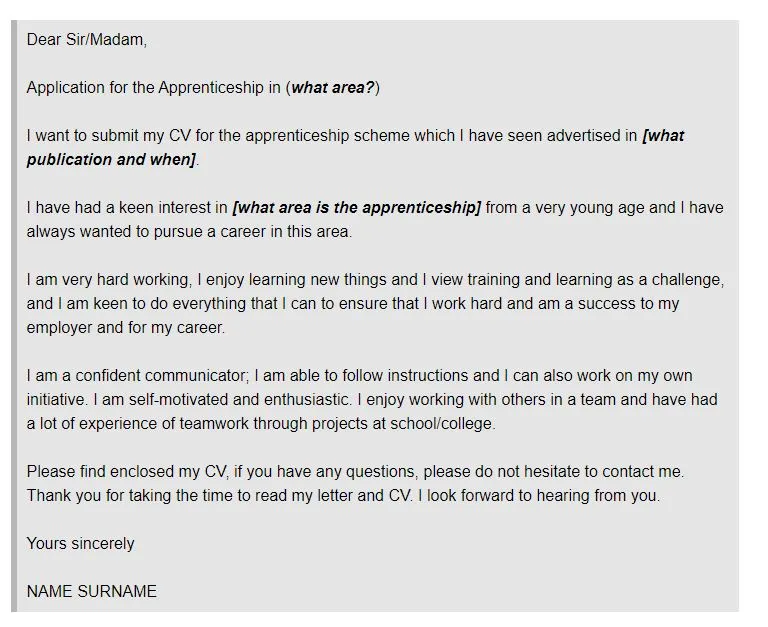Understanding the Importance of an Apprenticeship Cover Letter
An apprenticeship cover letter is your first chance to make a strong impression on a potential employer. It’s more than just a formality; it’s a vital tool that showcases your personality, enthusiasm, and suitability for the role. In a competitive job market, a well-crafted cover letter can set you apart from other applicants and significantly increase your chances of securing an interview. It provides you with the opportunity to explain why you are the perfect fit for the apprenticeship and to demonstrate your genuine interest in the company and the field. By investing time and effort into writing a compelling cover letter, you are investing in your future.
The Purpose of a Cover Letter
The primary purpose of a cover letter is to introduce yourself to the employer and to persuade them to read your resume. It allows you to highlight your most relevant skills, experience, and qualifications in a way that a resume alone cannot. The cover letter should showcase your personality, your communication skills, and your understanding of the apprenticeship and the company. It gives you the chance to explain any gaps in your resume, to address specific requirements outlined in the job description, and to demonstrate your genuine interest in the opportunity. Moreover, it shows that you have taken the time to research the company and tailor your application to their specific needs.
Highlighting Relevant Skills and Experience
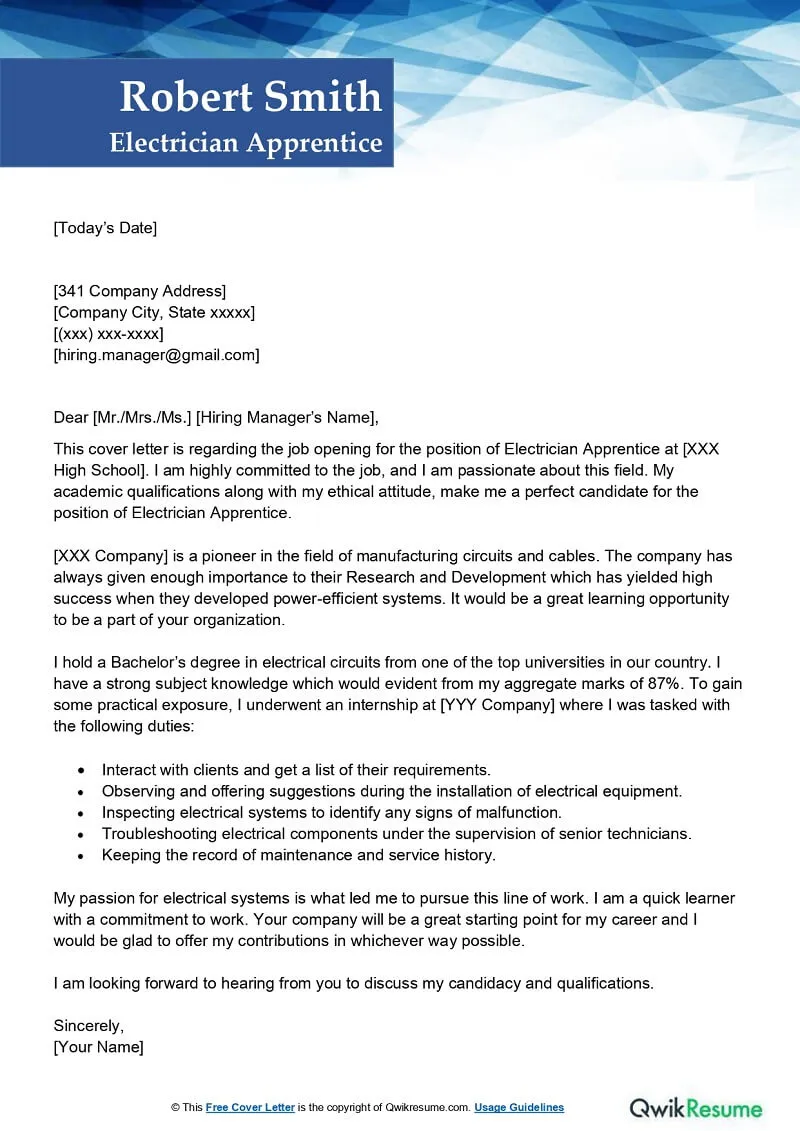
One of the most critical aspects of an apprenticeship cover letter is highlighting your relevant skills and experience. Even if you lack direct work experience, you can draw on your academic achievements, extracurricular activities, volunteer work, and any personal projects to showcase your abilities. Identify the skills that the apprenticeship requires, such as problem-solving, teamwork, communication, or technical skills. Then, provide specific examples of how you have demonstrated these skills in the past. Quantify your achievements whenever possible, using numbers and data to demonstrate the impact of your contributions. Tailor your examples to match the specific requirements of the apprenticeship to show the employer that you understand what they are looking for.
Researching the Apprenticeship and Company
Before you start writing your cover letter, it is vital to research the apprenticeship and the company thoroughly. Understand the specific requirements of the apprenticeship, the skills and qualifications they are seeking, and the company’s values and culture. Visit the company’s website, read their mission statement, and learn about their recent projects and achievements. This research will help you tailor your cover letter to the company’s specific needs and demonstrate your genuine interest. Address your letter to the hiring manager and mention something specific about the company that resonates with you to demonstrate that you have taken the time to learn about their work. Mention of the job description will help the recruiter see you are the right candidate.
Tailoring Your Cover Letter
Generic cover letters rarely make a positive impression. To stand out, you must tailor your cover letter to each specific apprenticeship. Review the job description carefully and identify the key requirements and qualifications. Then, highlight the skills and experience that are most relevant to the role. Use the company’s name throughout the letter and demonstrate your understanding of their business and values. Avoid using generic phrases and instead, personalize your letter with specific examples and anecdotes that showcase your unique personality and skills. Tailoring your cover letter demonstrates to the employer that you are genuinely interested in their apprenticeship program and that you have taken the time to understand their needs.
Key Components of an Apprenticeship Cover Letter
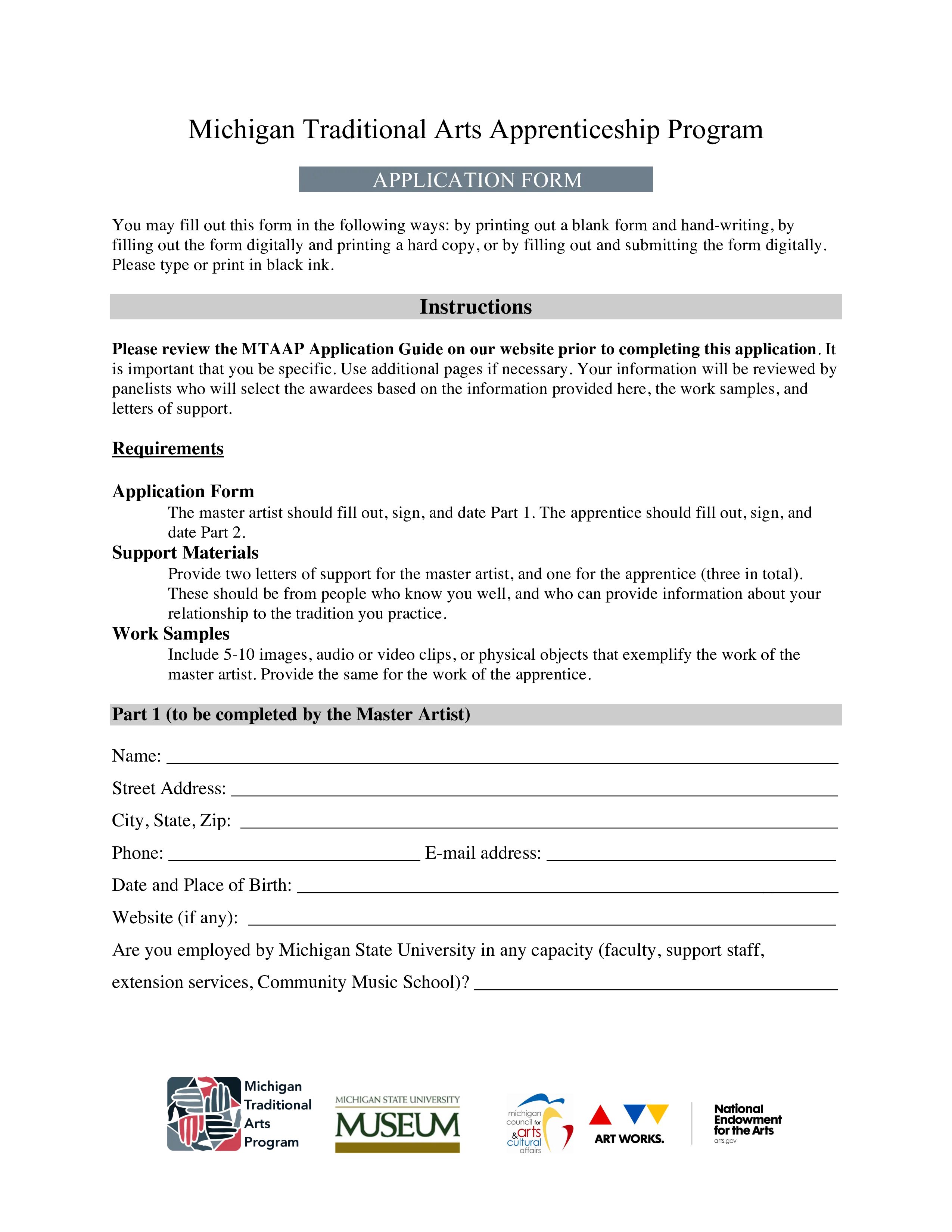
A well-structured cover letter typically includes several key components. The following sections are essential for any successful cover letter. Each section should be clear, concise, and relevant to the apprenticeship. This structure ensures that you present your information in a logical and engaging way, making it easy for the employer to understand your qualifications and interests. Ensure all the components create a story.
Your Contact Information
At the top of your cover letter, include your contact information. This should include your full name, address, phone number, and email address. Make sure your email address is professional and easy to read. This information allows the employer to easily contact you if they wish to schedule an interview. The use of a professional address also shows attention to detail.
The Salutation
Address your cover letter to the hiring manager or the person specified in the job description. If you can’t find a specific name, use a formal salutation like “Dear Hiring Manager.” Avoid generic greetings like “To Whom It May Concern,” as this can make your letter seem impersonal. Using the correct name shows that you have done your research and that you are interested in the specific opportunity.
Crafting a Compelling Opening Paragraph
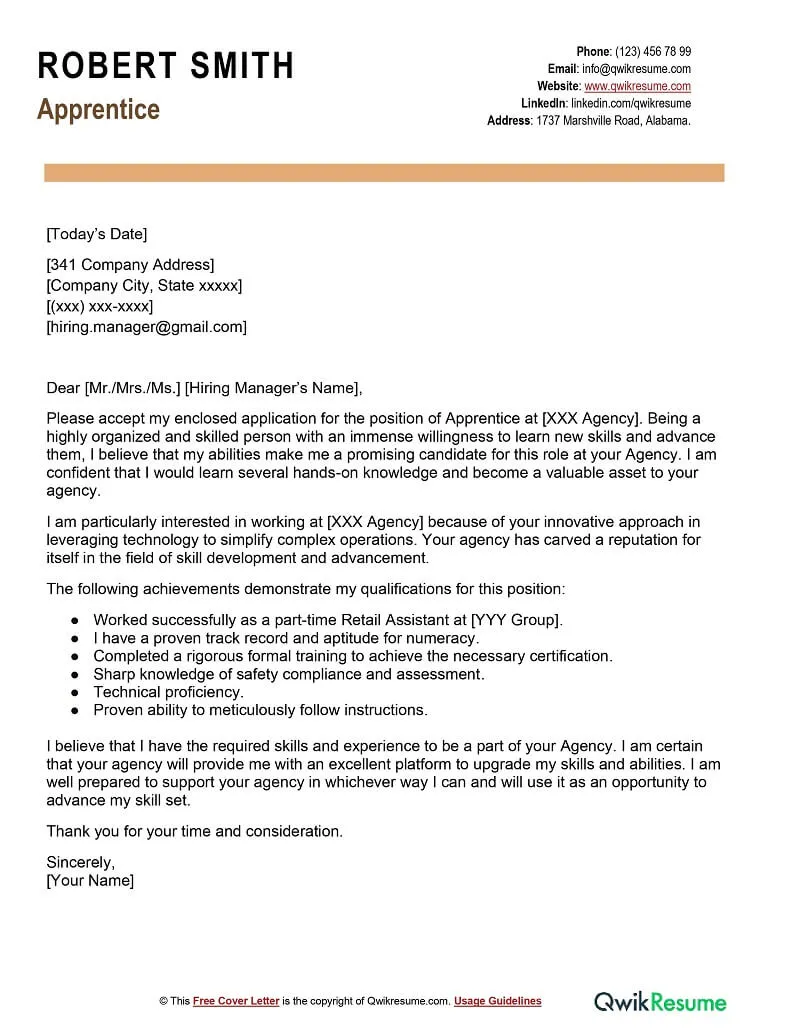
Your opening paragraph should immediately grab the reader’s attention. State the position you are applying for and where you found the job posting. Briefly mention why you are interested in the apprenticeship and the company. Show enthusiasm and make sure the recruiter want to keep reading.
Expressing Your Enthusiasm and Interest
Throughout your cover letter, express your enthusiasm and genuine interest in the apprenticeship and the company. Explain why you are excited about the opportunity and what motivates you to pursue this career path. Demonstrate that you have researched the company and understand their mission, values, and products or services. Share your long-term career goals.
Showcasing Your Relevant Skills
In the body of your cover letter, highlight your skills and experience that are relevant to the apprenticeship. Provide specific examples of how you have demonstrated these skills in the past. Refer to your resume and provide additional context or detail about your accomplishments. Quantify your achievements whenever possible.
Providing Examples of Your Achievements
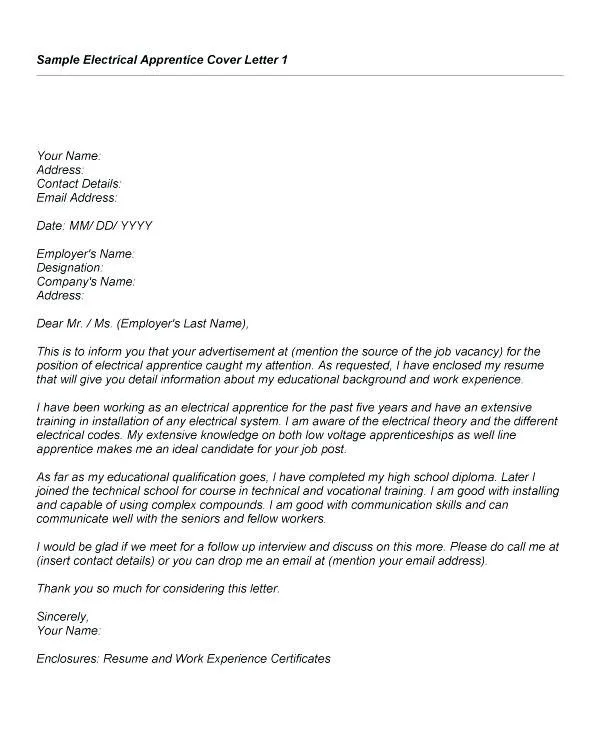
Don’t just list your skills; provide concrete examples of your achievements. Use the STAR method (Situation, Task, Action, Result) to describe a specific situation, the task you faced, the actions you took, and the results you achieved. This helps the employer understand the impact of your abilities. Focus on accomplishments that align with the apprenticeship requirements.
Addressing the Employer’s Needs
Make sure your cover letter focuses on how you can meet the employer’s needs. Refer to the job description and explain how your skills and experience align with the requirements. Use the employer’s language and demonstrate that you understand their challenges and goals. The goal here is to showcase why you are the right candidate for this role.
Demonstrating Your Knowledge of the Company
Show the employer that you have researched their company. Mention specific projects, products, or values that resonate with you. This shows that you are genuinely interested in the company and its work. This effort can set you apart from other candidates.
Expressing Your Career Goals
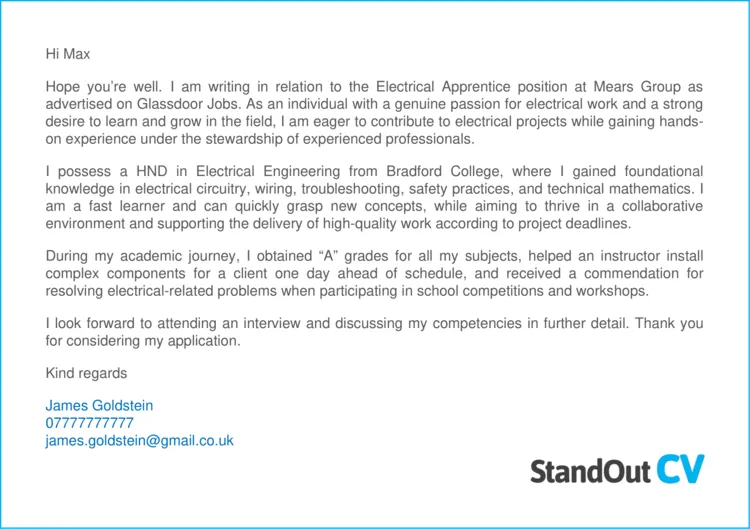
Briefly mention your career goals and how the apprenticeship aligns with your aspirations. Show that you are thinking long-term and that you are committed to growing within the company. Demonstrate that you see this apprenticeship as a valuable stepping stone in your career. Share your eagerness to learn new skills.
Writing a Strong Closing Paragraph
Your closing paragraph should leave a lasting positive impression. Use a professional tone and reiterate your interest in the apprenticeship. Express your gratitude for the opportunity to apply and mention your availability for an interview. Keep your closing brief, polite, and confident.
Thanking the Employer
Thank the employer for considering your application. Express your appreciation for their time and the opportunity to be considered for the apprenticeship. This shows good manners and a professional approach.
Reiterating Your Interest
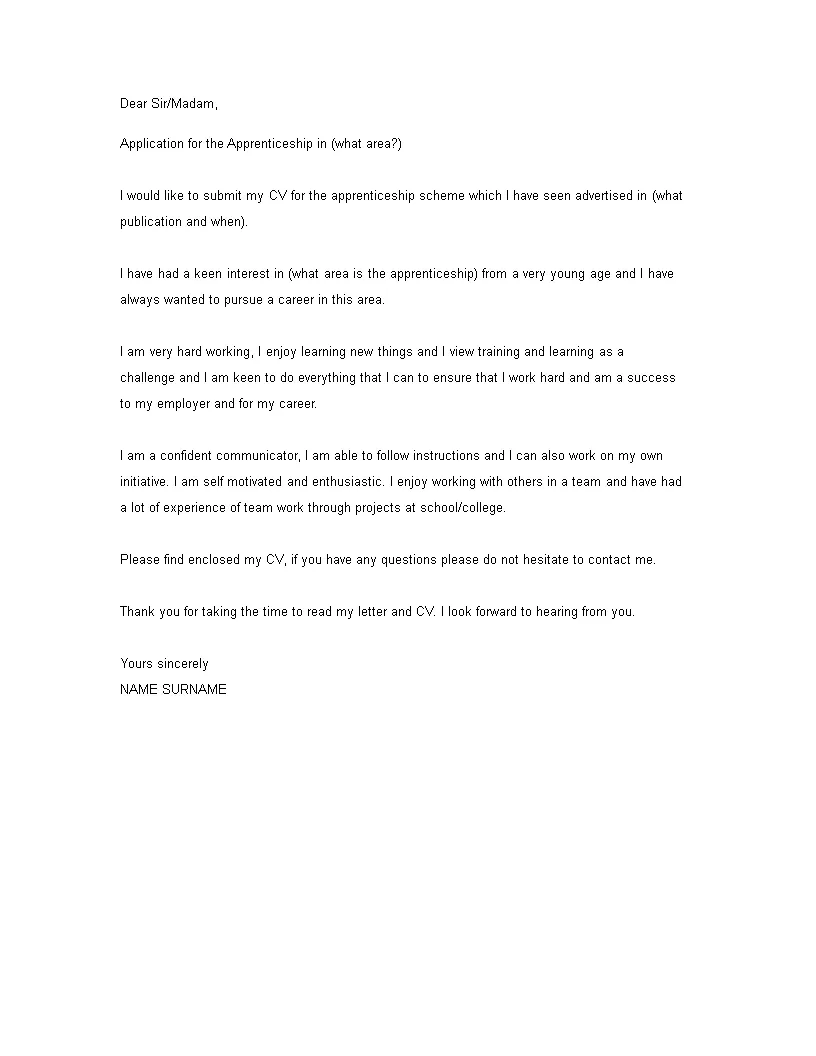
Reiterate your interest in the apprenticeship and the company. Re-emphasize why you are a good fit for the role and what you can bring to the team. Reinforce your enthusiasm and your commitment to succeeding in the apprenticeship.
Proofreading and Editing Your Cover Letter
Before submitting your cover letter, thoroughly proofread and edit it. Check for any typos, grammatical errors, or formatting inconsistencies. Ask a friend, family member, or career advisor to review your letter for clarity and accuracy. A well-written, error-free cover letter demonstrates attention to detail and professionalism.
Common Mistakes to Avoid
Avoiding common mistakes can significantly increase your chances of success. Be mindful of the errors that can undermine your application.
Ignoring the Job Description
Failing to tailor your cover letter to the specific job description is a critical mistake. Always review the job description carefully and address the requirements and qualifications outlined. Tailoring your letter shows that you are genuinely interested in the specific apprenticeship.
Using Generic Language
Using generic phrases and clichés can make your cover letter sound impersonal and uninspired. Replace generic language with specific examples and personalized anecdotes. Show the employer that you have taken the time to understand the requirements and craft a customized response.
Typos and Grammatical Errors
Typos and grammatical errors can make your cover letter appear unprofessional and careless. Always proofread your cover letter carefully before submitting it. Ask someone else to review it for any mistakes. A well-written, error-free cover letter demonstrates attention to detail.
Sending a Cover Letter Without Customization
Sending the same cover letter to multiple employers is a mistake. Customize your cover letter to each apprenticeship, demonstrating that you have taken the time to understand the specific requirements and the company’s values. Taking the time to personalize the letter shows your genuine interest in the role.
Using an Unprofessional Email Address
Your email address should be professional and easy to read. Avoid using nicknames or unprofessional language. The email address you use is part of your personal brand. A professional email address shows attention to detail and respect for the employer.
Best Practices for Submitting Your Cover Letter
Following best practices when submitting your cover letter can improve your chances of success. Make sure to send your cover letter as a PDF to retain formatting. Proofread your cover letter, and submit it on time.
By following these guidelines, you can create a compelling apprenticeship cover letter that highlights your skills, experience, and enthusiasm. This will significantly increase your chances of getting hired and starting your career path.
